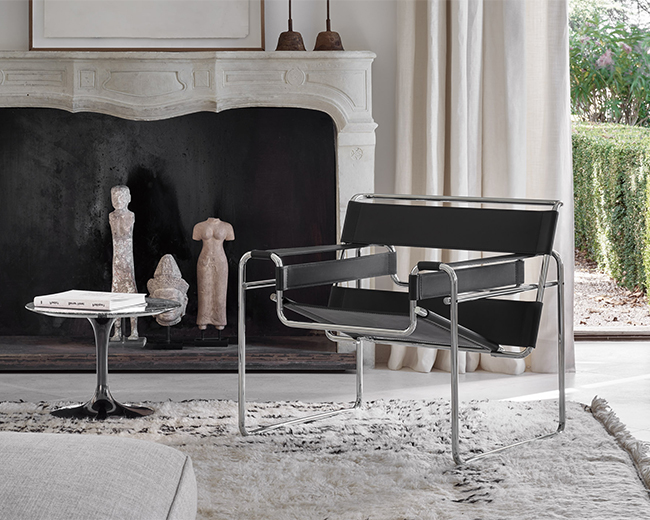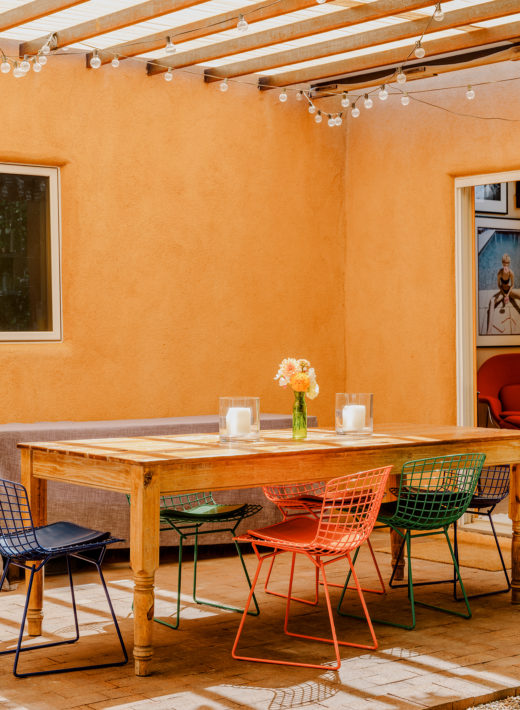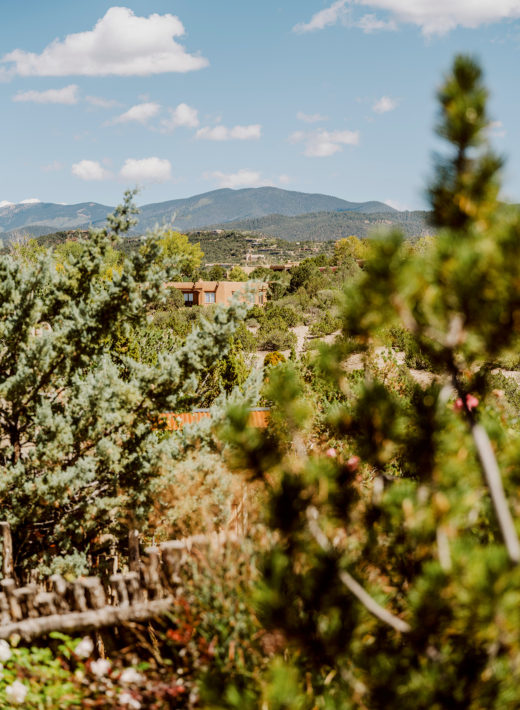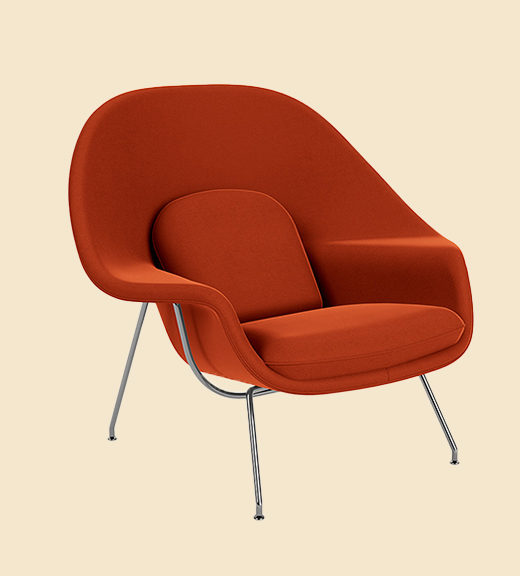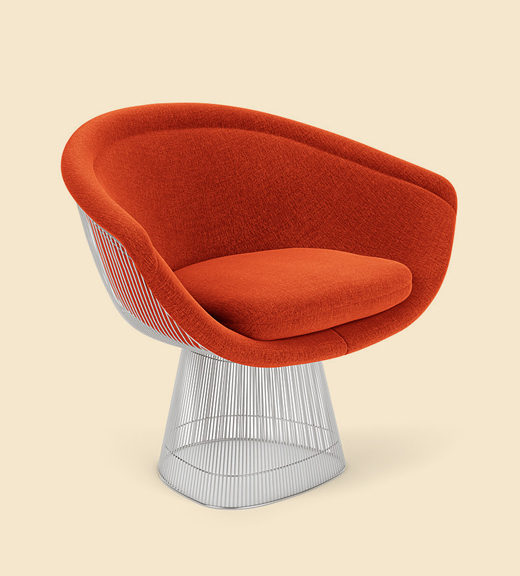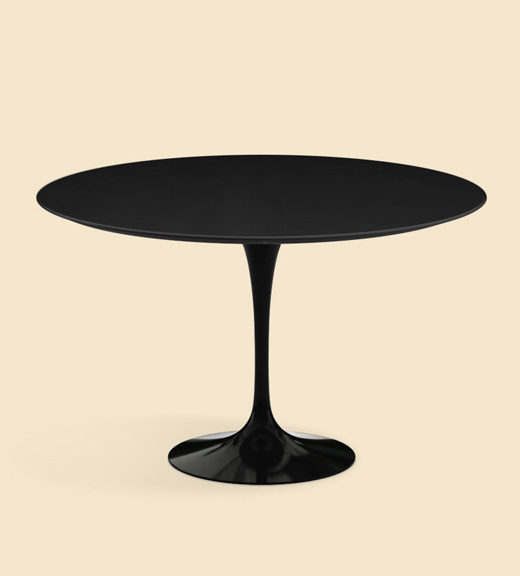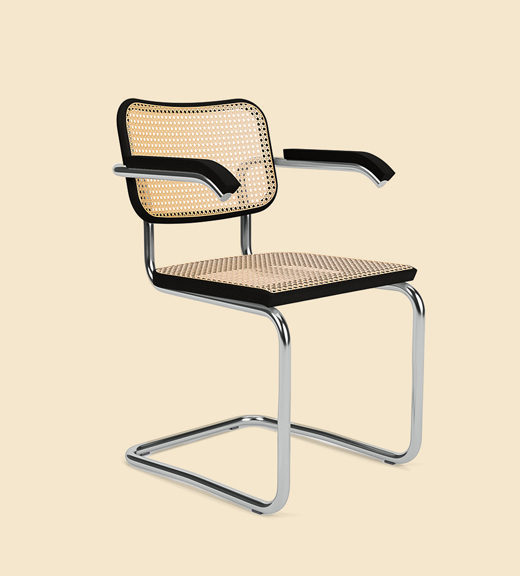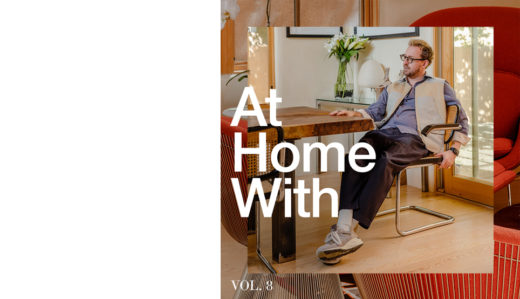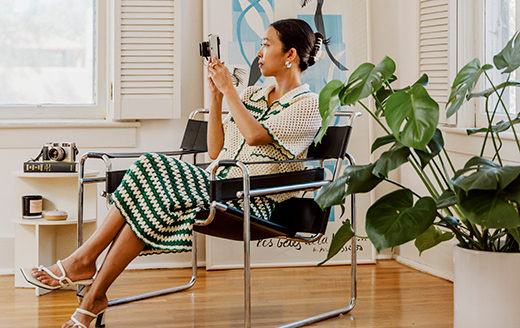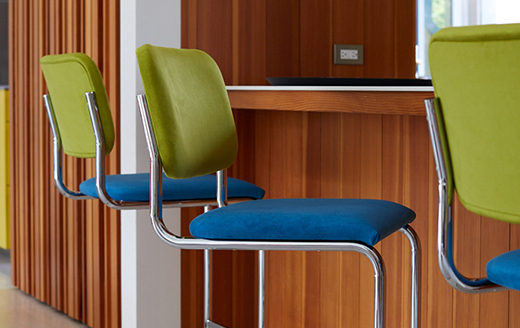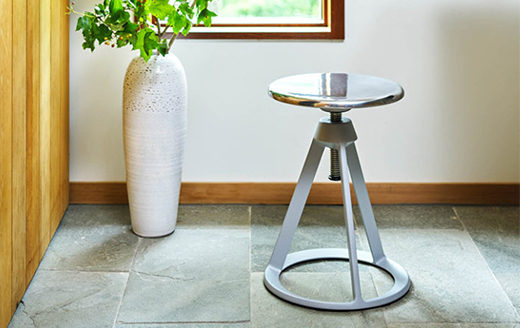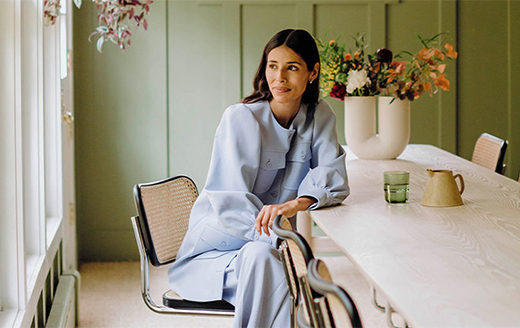LIVING WITH
Christopher Webster on Designing a Home You Can Love and Live With
Collecting art and design for your home can be intimidating. How do you thread tastes, eras, movements, and historical contexts together in a cohesive whole? For gallerist Christopher Webster, it’s simple: “Buy things that you like.” Since 2005, Webster has lent his personal touch to his family’s eponymous collection and gallery in New Mexico, showcasing historic and contemporary works of the Southwest united by quality, craftsmanship, beauty, and detail.
In the Santa Fe home that he shares with his partner Paisley Mason, Webster sat down to discuss the Webster Collection, the stories of the Southwest, and collecting for the home and gallery.
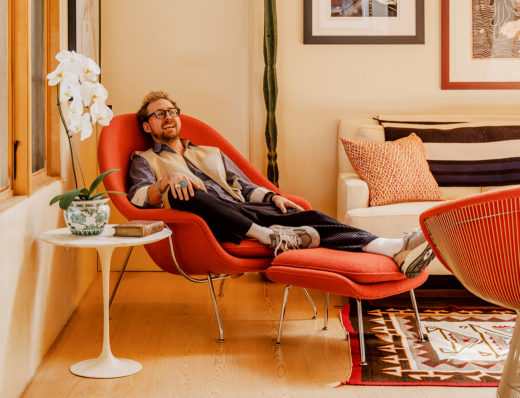
Tell us a bit about your gallery. How did it gallery begin? What objects first entered your collection?
In 1972, my father moved to Santa Fe. He immediately fell in love with the art and antiquities of the various native cultures of the Southwest. Having grown up in the art scene in North Carolina, he had no exposure to Native American art and knew that he had the opportunity to share what he saw as an important piece of art history. Working with international museums and collectors, my father began buying, selling, and trading these works. In the process, he put together the foundation of his own collection predominantly based in historic and prehistoric Native American materials, subsequently adding pre-Columbian Central and South American pieces.
In 2005, I began working with the gallery and became passionate about incorporating contemporary works of art into exhibitions showcasing both contemporary and ancient work in a manner unlike what I had seen elsewhere.
Today, we continue to rotate and expand our collection while working with artists who consign their work in more of a traditional gallery model.
How do you negotiate your appreciation for historic, modern, and contemporary art and design in one space? Do you see a throughline between these moments in time?
The throughline is quality, craftsmanship, and attention to detail. I find it boring if everything is homogenous and sterile. Often when I walk into galleries, I feel a distinct lack of life and energy. By combining art and design from different eras in a space that was designed to feel lived-in, used, and appreciated, I hope to share a unique perspective – a slice of what I find beautiful and fascinating.
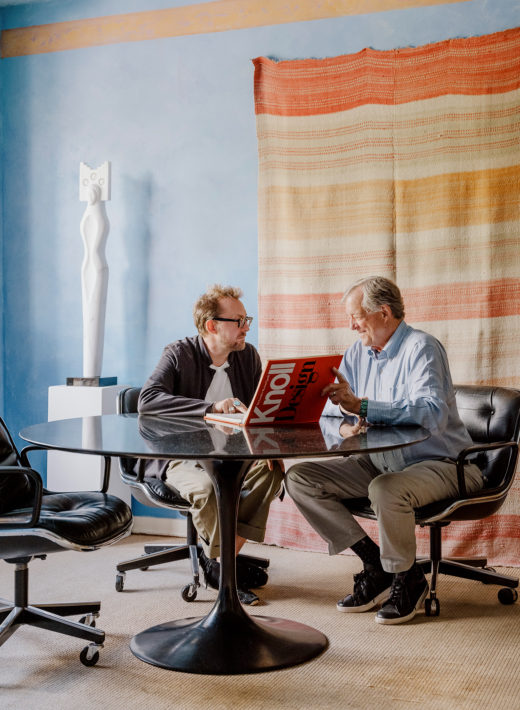
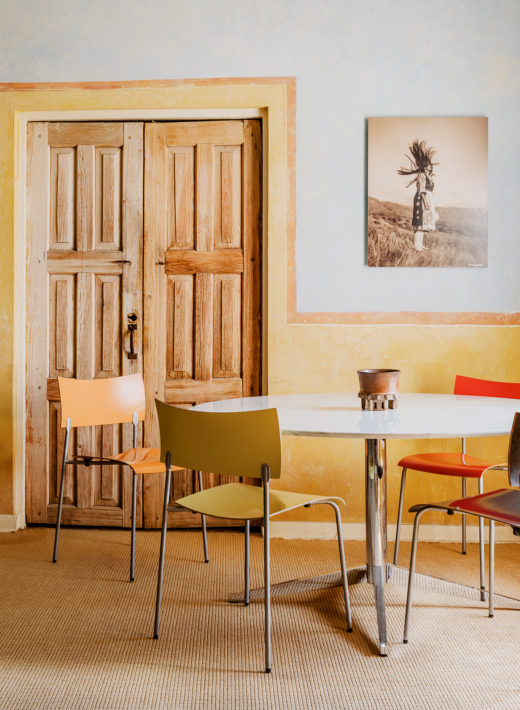
How does the Southwest influence your design choices?
The primary influence of our works are rooted in the aesthetic of the Spanish exploration through Mexico in the 16th and 17th centuries. Alongside our vintage Knoll furniture, the majority of the furnishings are antique Spanish, Mexican, and New Mexican pieces. The walls consist of hand-applied mud plaster, many containing multiple layers in a fashion similar to the way a room in a Hacienda might have changed over hundreds of years.
In my Santa Fe home that I share with my partner Paisley, we have taken a more eclectic approach. The Southwest enters into our design in a variety of direct ways: a 19th century Navajo rug anchors our living room, a sun-bleached elk skull, reminiscent of the minimalist Georgia O’Keeffe desert aesthetic, hangs over the fireplace, seven-day prayer candles sit on the mantlepiece, which remind me of the churches and homes I grew up with.
We juxtapose this palette with other artworks and objects that appeal to us – West Mexican and Mayan ceramics, a Madagascan vetiver basket, a pair of ostrich egg lamps I bought in South Africa – all surrounded by paintings and photographs that inspire our imagination. This is the contemporary Southwest as we see it. On our wall of art, a tender portrait of rural Northern New Mexican life by Alex Harris sits next to cutting edge commentary on the development and desecration of his ancestral lands by Hopi and Pueblo artist Michael Namingha.
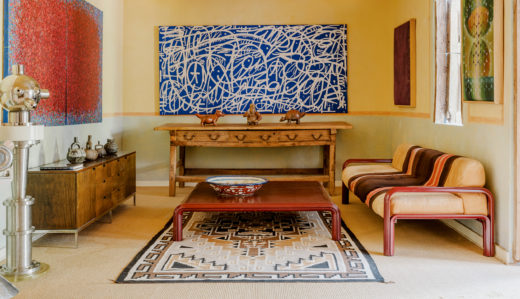
I challenge the distinction between art, craft, and design, and also between gallery and boutique. By challenging the divisive categorization of artist, designer, and creator, or consumer and collector, I celebrate creativity and craftsmanship in all forms
How do you make a gallery come alive?
As a gallerist and curator, I challenge the distinction between art, craft, and design, and also between gallery and boutique. By challenging the divisive categorization of artist, designer, and creator, or consumer and collector, I celebrate creativity and craftsmanship in all forms.
My approach to curation usually begins with a single artist or piece. There is almost always something that becomes the root of the story that I want the exhibition to convey. Sometimes, it is purely visual and aesthetic, other times it’s thematic. I find curating a space to be like doing a puzzle. As you start putting pieces together, the show finds focus.
Any tips for aspiring collectors? How can they uncover their own local history, artistry, and beauty?
Buy things that you like! Collect art that you respond to, rather than what someone else tells you is important. And unless you’re buying something that already has a significant market by an artist who is considered important, don’t buy art as an investment. It can take years for the market to decide the collectible value of an artist, and that can change, so buy what you enjoy and want to live with.
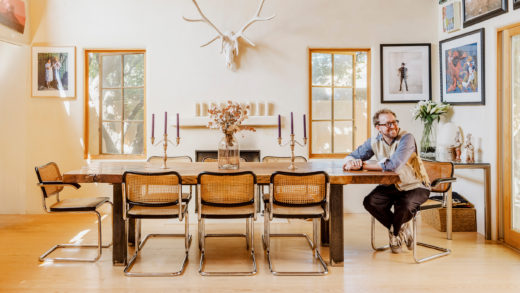
Tell us about your Knoll designs at home. How did you come about your collection of Knoll? And what about Saarinen and Platner designs, in particular, inspired you?
The furniture collection at home is a combination of vintage and cotemporary pieces. Paisley, my partner, and I both have parents who have a deep appreciation for midcentury design, and Knoll in particular. We have inherited and pilfered pieces from our families, as well as sought out new pieces of our own. It is also a personal hobby to browse consignment shops, antique stores, and estate sales to find treasures of all sorts.
My favorite furniture designer is Eero Saarinen. The clean modernist lines juxtaposed with both comfort and utility have always appealed to me. Platner lounge chairs are ideal for entertaining because they’re perfectly comfortable for the perfect amount of time. You want to sit in them for a cocktail or two, but not lounge in them all night, like the Womb chair.
How did you set out to design your living/dining room? What were your priorities?
We wanted to have a space that felt both very comfortable for our own daily use and also welcome guests when we entertain. When we were moving in, we found the wooden slab for the dining table at the Rose Bowl Flea Market in Pasadena. When we did, we canceled our flights home, rented a moving truck, and drove for 16 hours the next day while mentally redecorating. We found someone at home to build the base we imagined – something simple and clean that didn’t take up too much visual space or attention. Once we devised the design, we figured there was no more perfect chair for this than Marcel Breuer’s Cesca chair. We had several of them already, but we found a vintage dealer in Albuquerque to complete the set.
The living room is both a perfect place for entertaining and for spending time alone. Having cocktails and conversation around the Saarinen coffee table is a regular occurrence, but I also love being in the space by myself, curled up in the Womb chair with a cup of coffee in the morning.
The living room is both a perfect place for entertaining and for spending time alone. Having cocktails and conversation around the Saarinen coffee table is a regular occurrence, but I also love being in the space by myself, curled up in the Womb chair with a cup of coffee in the morning.
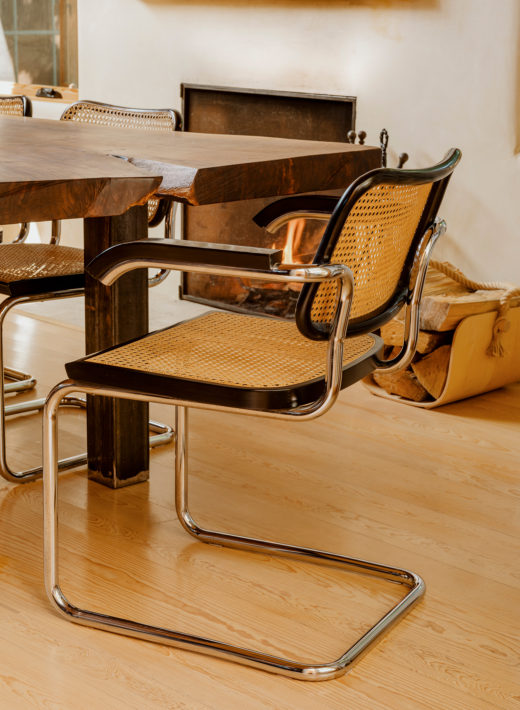
Do you bring your work home—is your home a gallery of sorts, too? How is your personal style reflected there?
I don’t consider the house an extension of the gallery, but I often can’t help bringing home pieces that I love. As a curator, I’m fortunate to showcase many things that I appreciate and respond to, and as a lover and collector of art, some of those objects filter into my personal space.
There are also many pieces in my collection from other artists and galleries that I admire. Much like how I combine furniture styles, I thrive on creating rich mixtures of art that helps my spaces feel like home.
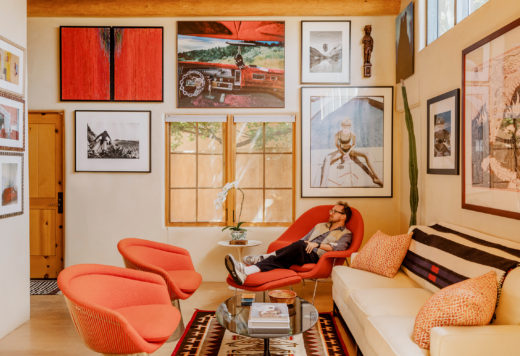
Photography by Max Burkhalter




